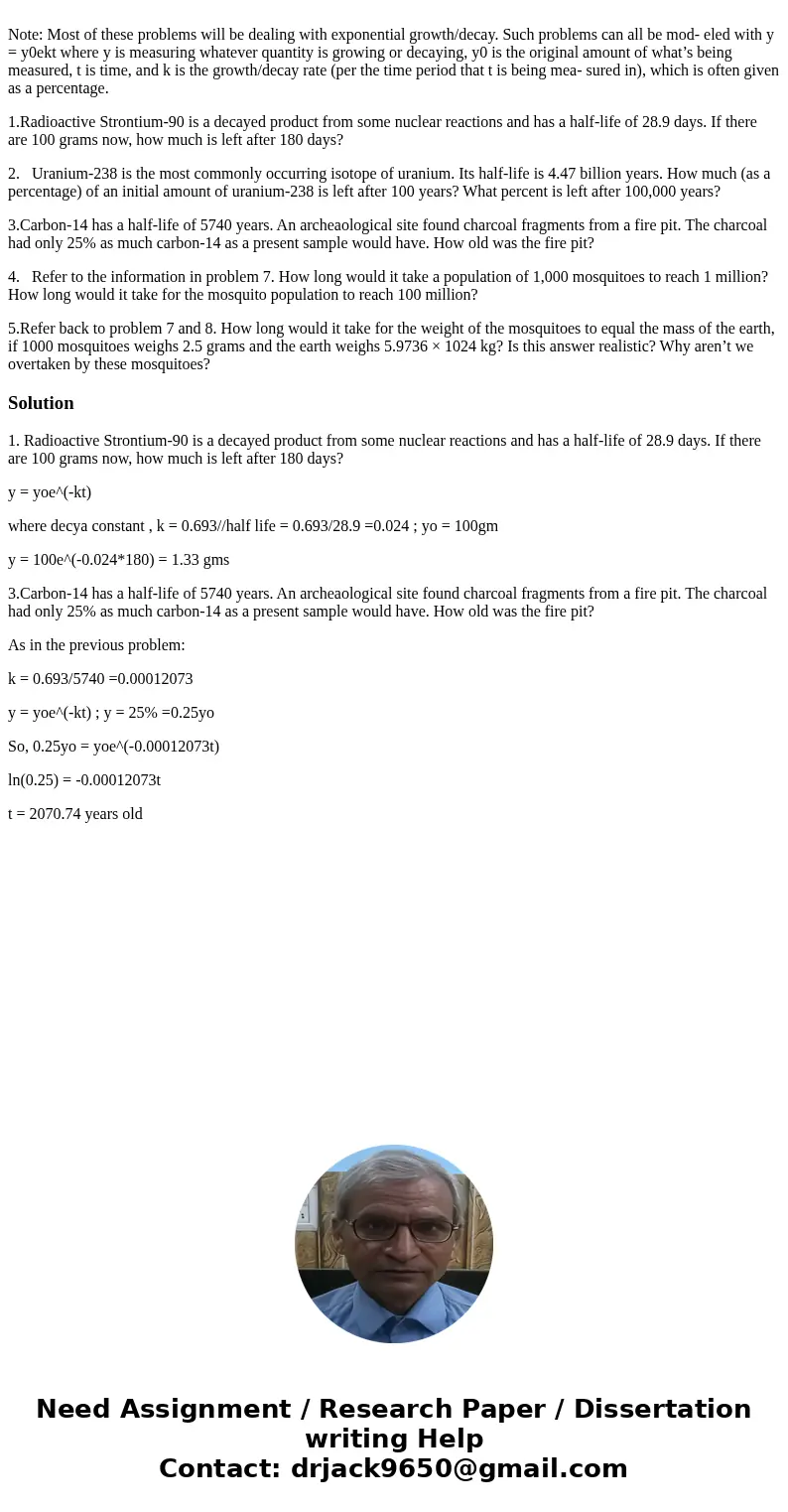Note Most of these problems will be dealing with exponential
Note: Most of these problems will be dealing with exponential growth/decay. Such problems can all be mod- eled with y = y0ekt where y is measuring whatever quantity is growing or decaying, y0 is the original amount of what’s being measured, t is time, and k is the growth/decay rate (per the time period that t is being mea- sured in), which is often given as a percentage.
1.Radioactive Strontium-90 is a decayed product from some nuclear reactions and has a half-life of 28.9 days. If there are 100 grams now, how much is left after 180 days?
2. Uranium-238 is the most commonly occurring isotope of uranium. Its half-life is 4.47 billion years. How much (as a percentage) of an initial amount of uranium-238 is left after 100 years? What percent is left after 100,000 years?
3.Carbon-14 has a half-life of 5740 years. An archeaological site found charcoal fragments from a fire pit. The charcoal had only 25% as much carbon-14 as a present sample would have. How old was the fire pit?
4. Refer to the information in problem 7. How long would it take a population of 1,000 mosquitoes to reach 1 million? How long would it take for the mosquito population to reach 100 million?
5.Refer back to problem 7 and 8. How long would it take for the weight of the mosquitoes to equal the mass of the earth, if 1000 mosquitoes weighs 2.5 grams and the earth weighs 5.9736 × 1024 kg? Is this answer realistic? Why aren’t we overtaken by these mosquitoes?
Solution
1. Radioactive Strontium-90 is a decayed product from some nuclear reactions and has a half-life of 28.9 days. If there are 100 grams now, how much is left after 180 days?
y = yoe^(-kt)
where decya constant , k = 0.693//half life = 0.693/28.9 =0.024 ; yo = 100gm
y = 100e^(-0.024*180) = 1.33 gms
3.Carbon-14 has a half-life of 5740 years. An archeaological site found charcoal fragments from a fire pit. The charcoal had only 25% as much carbon-14 as a present sample would have. How old was the fire pit?
As in the previous problem:
k = 0.693/5740 =0.00012073
y = yoe^(-kt) ; y = 25% =0.25yo
So, 0.25yo = yoe^(-0.00012073t)
ln(0.25) = -0.00012073t
t = 2070.74 years old

 Homework Sourse
Homework Sourse